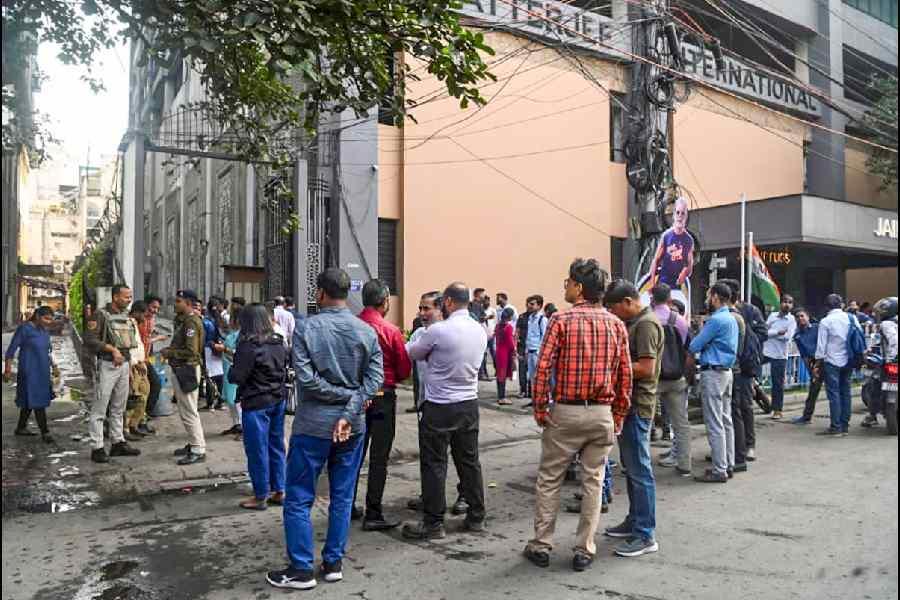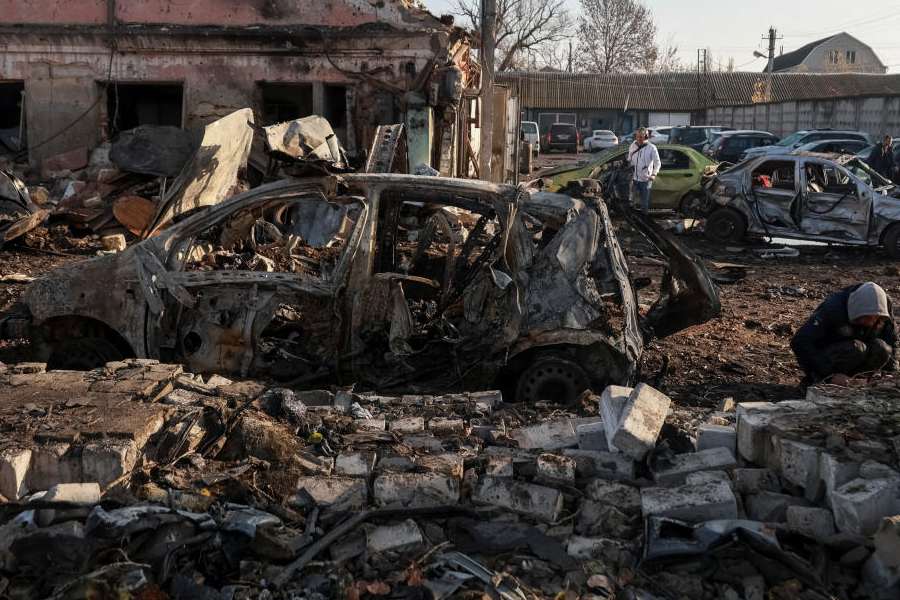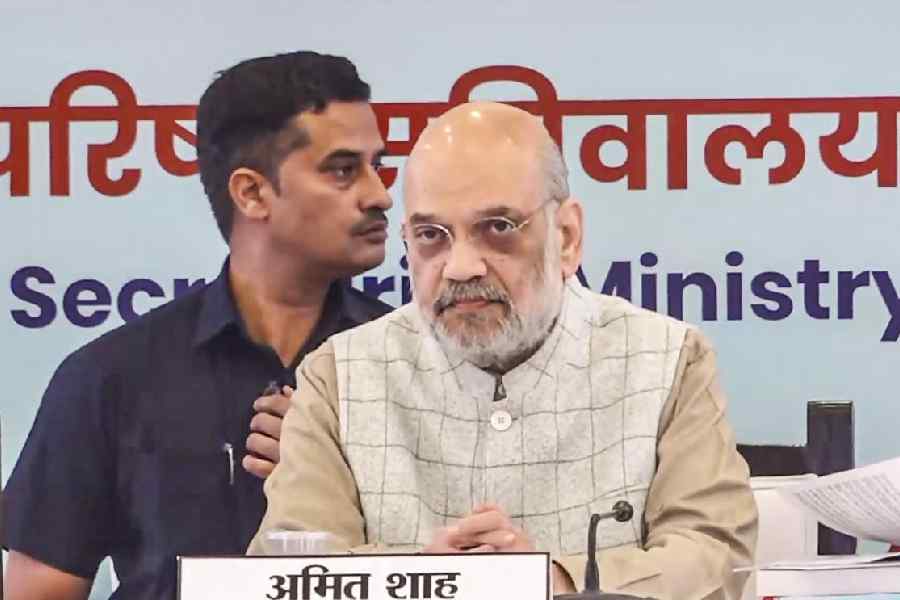Powerful tremors from a 5.5-magnitude earthquake in Bangladesh jolted Calcutta on Friday morning, prompting several residents to rush out of highrises and scurry for cover.
In seismic parlance, a quake of magnitude 5 qualifies as “strong”.
Several social media users claimed they saw ceiling fans and chandeliers swaying and heard windows rattling as the shockwaves from the temblor rippled through their homes and offices.
Friday’s tremors were the most palpable in Calcutta in recent years. A seismologist attributed it to the city’s geographical proximity to the epicentre.
The earthquake struck at 10.38am (10.08am IST) near the city of Narsingdi in central Bangladesh at a depth of 10km, about 25km from Dhaka, the US Geological Survey (USGS) said.
At least six deaths and over 100 injuries have been reported in Bangladesh. (See Foreign)
In Bengal, no casualty has been reported so far.
India’s National Centre for Seismology (NCS) reported that the quake measured 5.7 on the Richter scale.
Calcutta is around 350km from Dhaka. Apart from Calcutta, tremors were felt in Hooghly, Nadia, Murshidabad and North 24-Parganas.
Pritam Bhattacharya, who works with a private bank at Technopolis in Sector V, was near a coffee dispenser when he felt his head spin.
“I thought it was only me, but others also felt the same way. We then saw the fans and hanging lights swaying. It lasted for a good 15-20 seconds,” Bhattacharya said.
A young doctor who went to meet his parents in their Southern Avenue home said they could feel the couch shaking. “We were on the second floor, sipping tea. Suddenly, the couch started shaking. We panicked and ran barefoot down the stairs,” the doctor said.
They waited on the road for over five minutes for the tremors to subside before going back into their apartment.
From Salt Lake to Chowringhee, many office buildings were vacated.
“Quake. For sure.. Feeling it in my bed,” posted a Facebook user.
“Thirty seconds of fear... The city stood still, hoping everyone stays safe,” wrote an X user.
Sankar Kumar Nath, vice-chancellor of Burdwan University and former professor of geophysics and seismology at IIT Kharagpur, told this newspaper: “ Bengal and Bangladesh belong to the same geotectonic unit. They are interconnected through the Bay of Bengal. A distance of 200-500km from the source is considered ‘near field’ in seismic parlance. Calcutta is barely 350km from Dhaka. So, the impact was tangible here.”
Nath said the earthquake measured IX on the Modified Mercalli Intensity (MMI) Scale in Dhaka and VII on the same scale in Calcutta.
The Mercalli scale measures the intensity of a quake based on observed effects such as the extent of damage caused. The Richter scale measures its magnitude based on the energy released, as recorded by a seismograph. The Mercalli scale is subjective and varies with location, while the Richter scale gives an objective, single value for an earthquake.
The Bangladesh quake came after two moderate-intensity earthquakes in Pakistan and Afghanistan in the early hours of Friday, according to the NCS.
On March 28, a 7.7-magnitude earthquake hit strife-torn Myanmar just before noon, killing hundreds. Some 1,000km away, all Calcutta felt were very mild tremors.
The monstrous 7.9-magnitude quake in Nepal in April 2015, which killed over 1,000 in the landlocked Himalayan country, also caused deaths in Bihar, Uttar Pradesh and north Bengal because of their geographical proximity.











